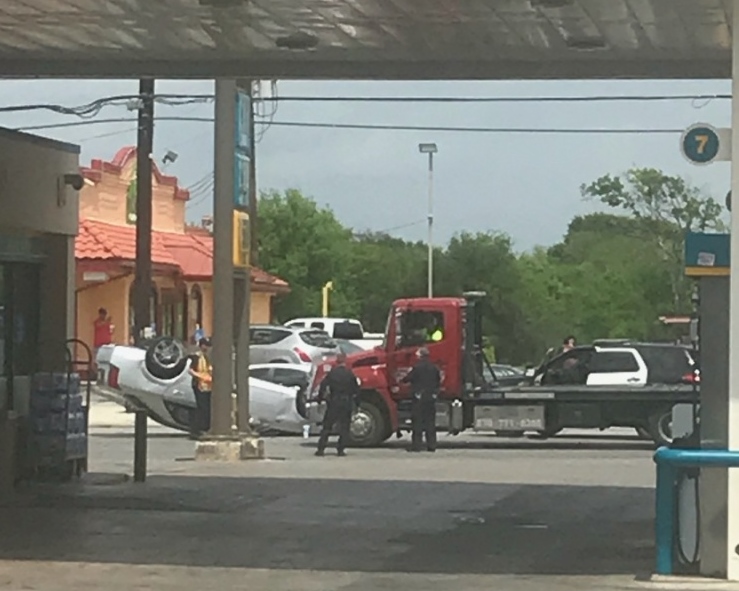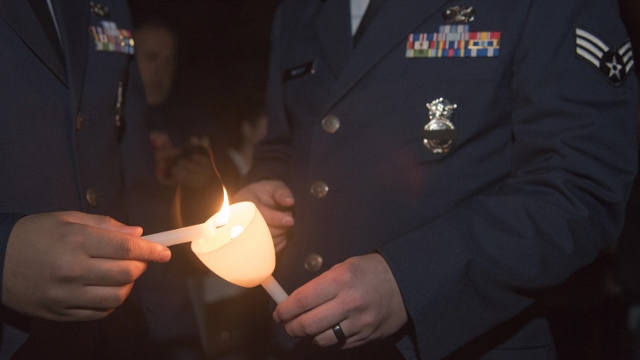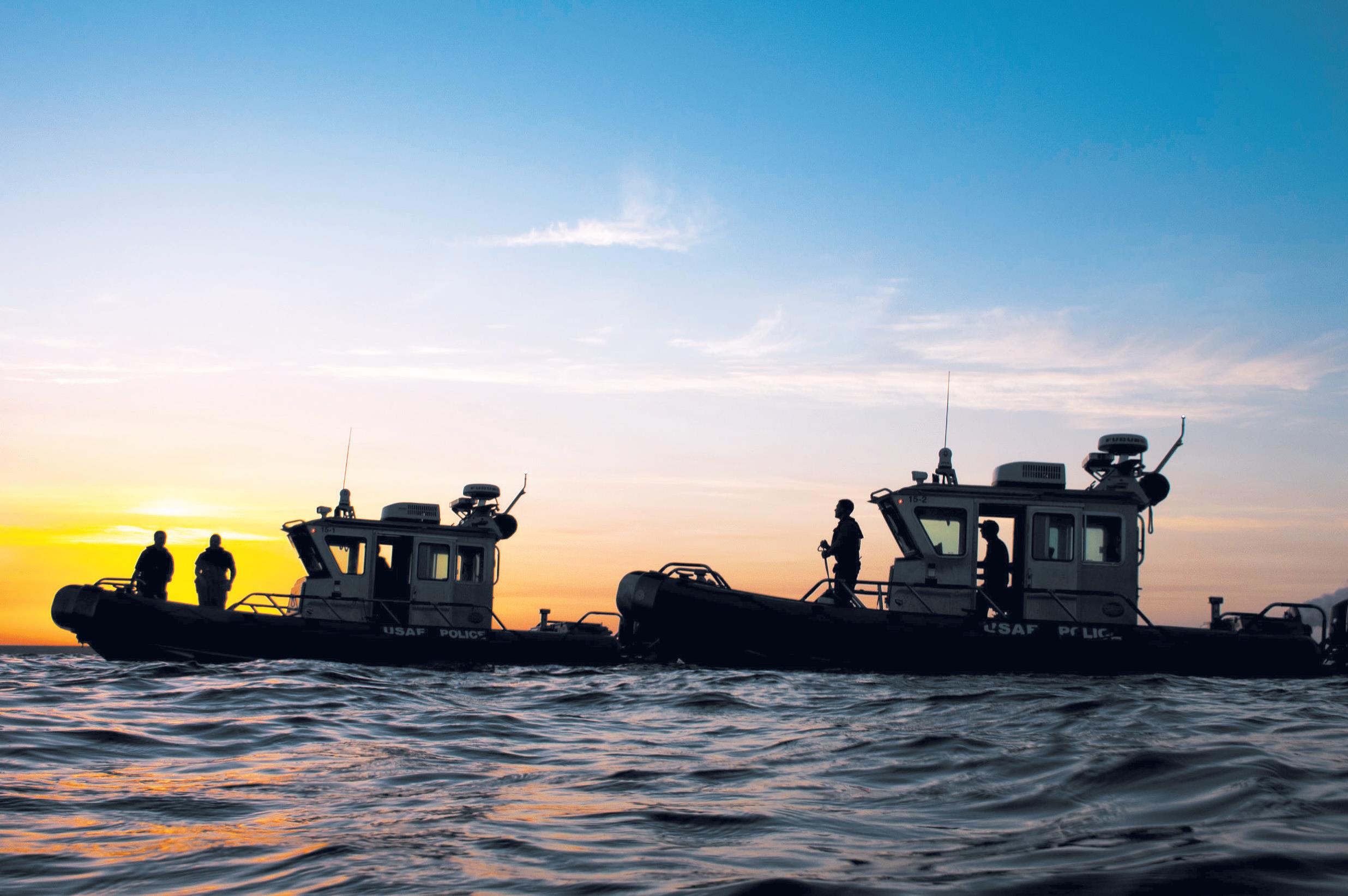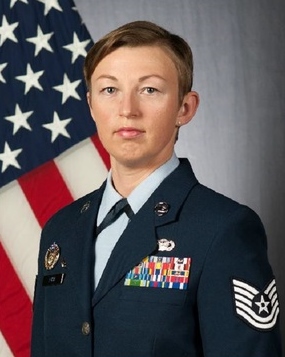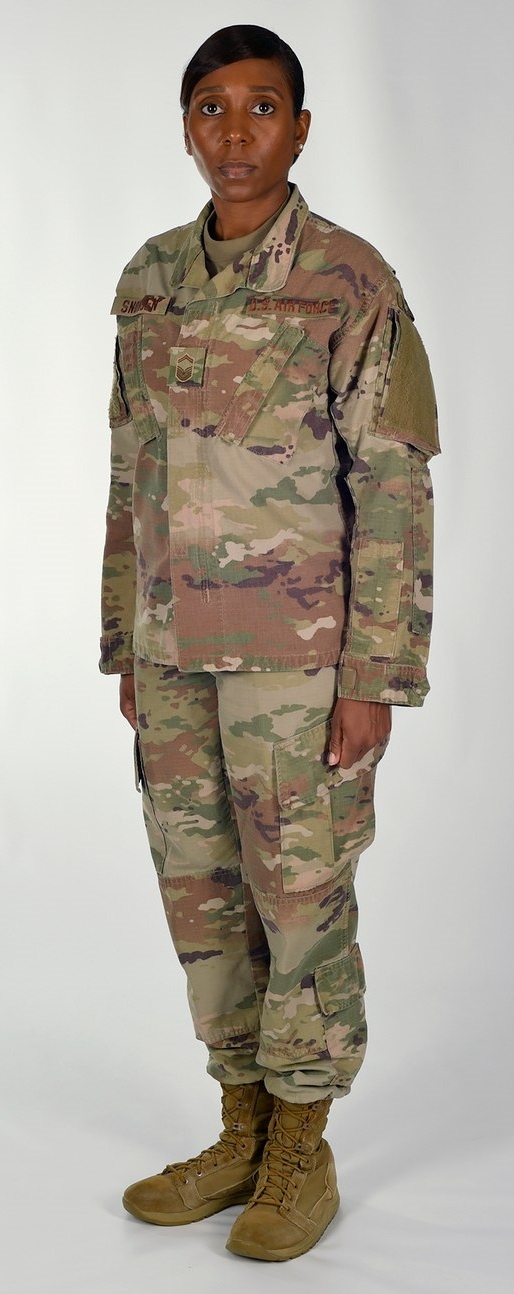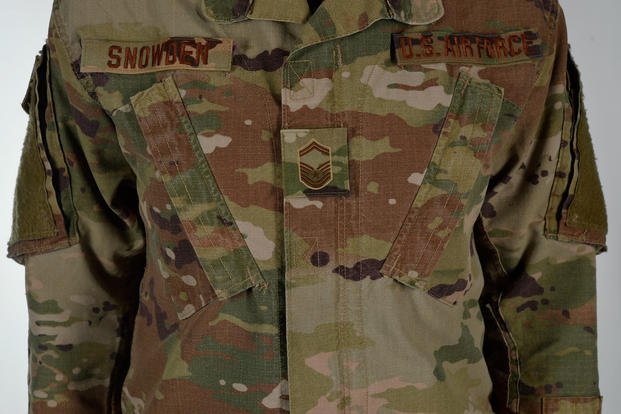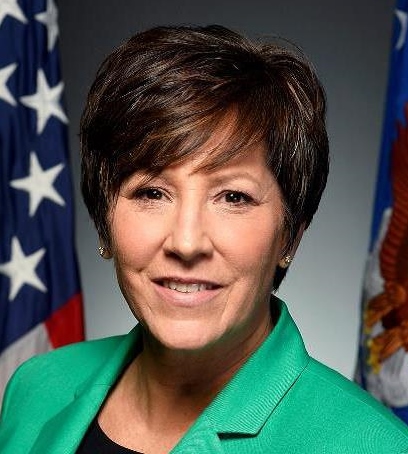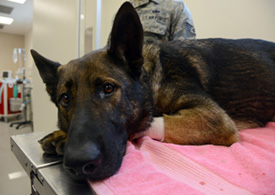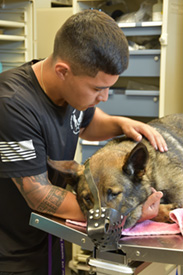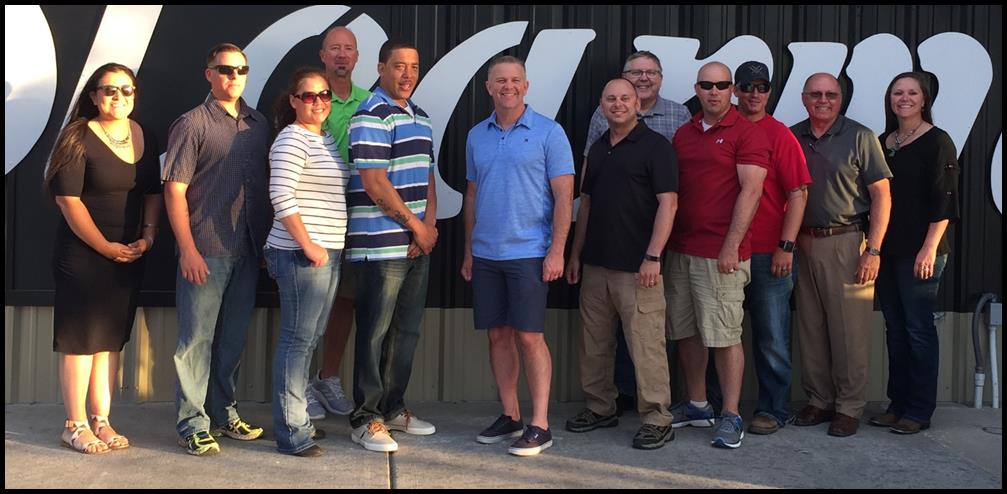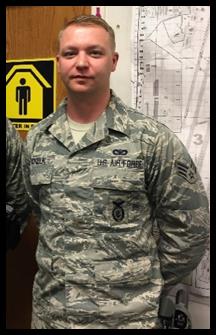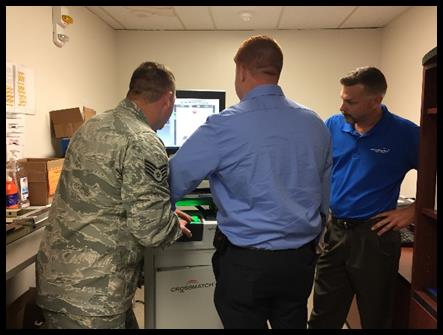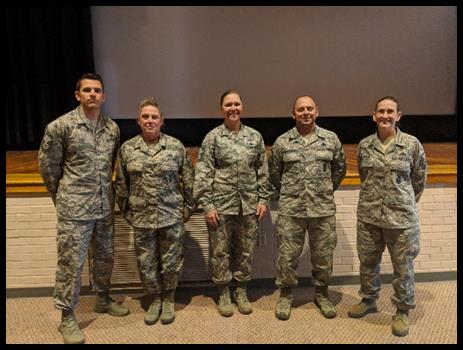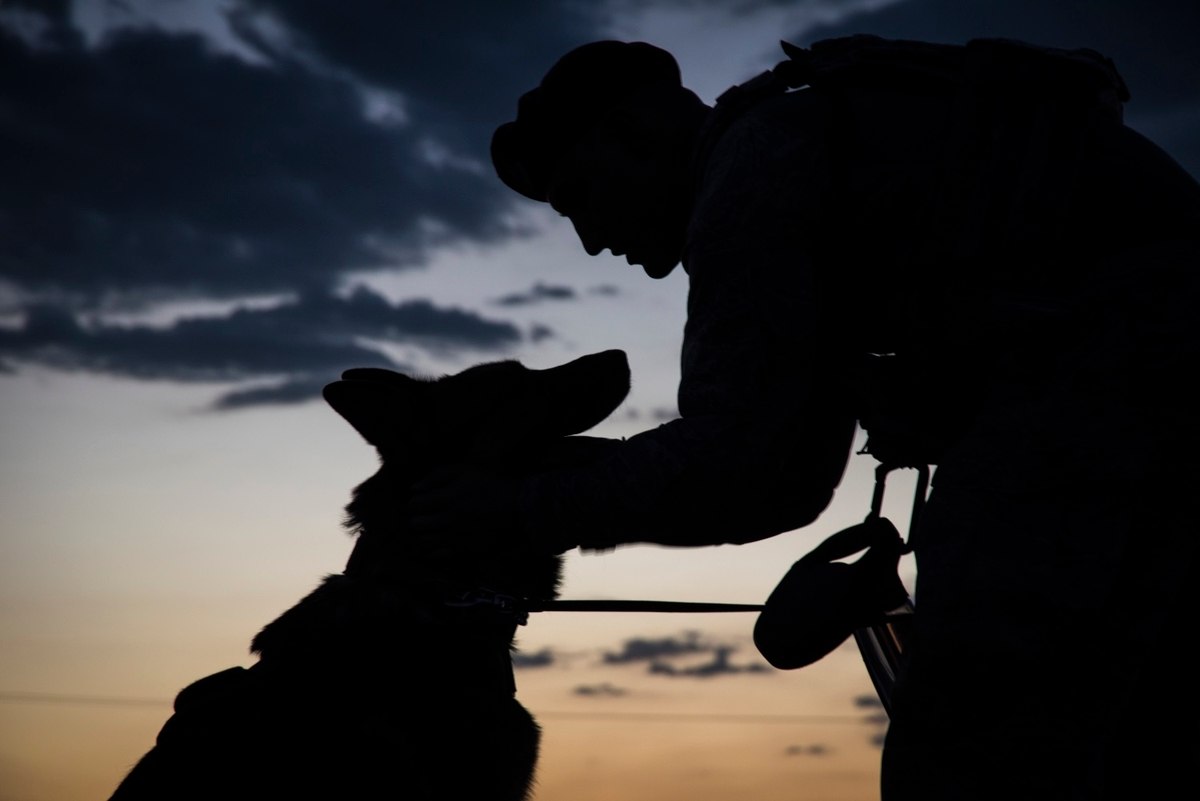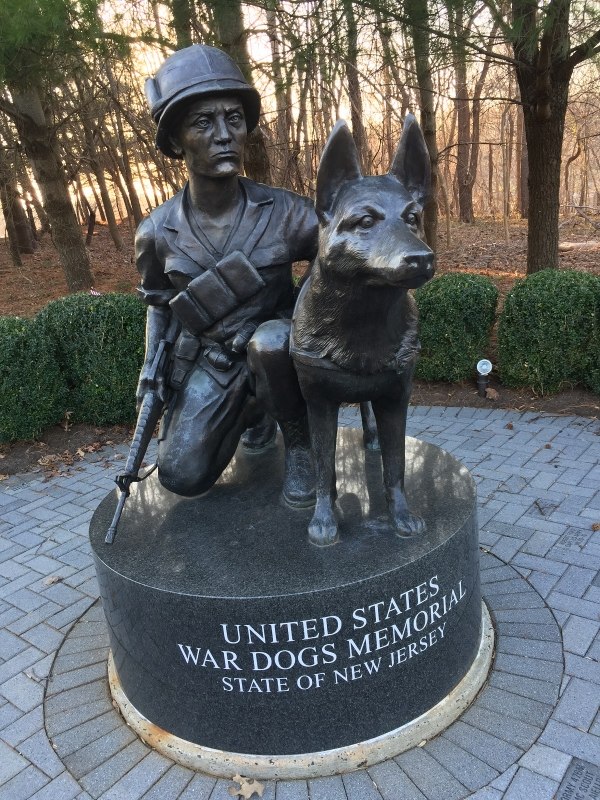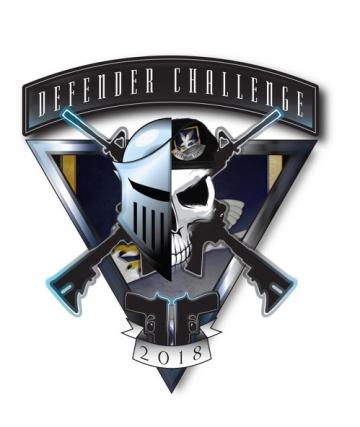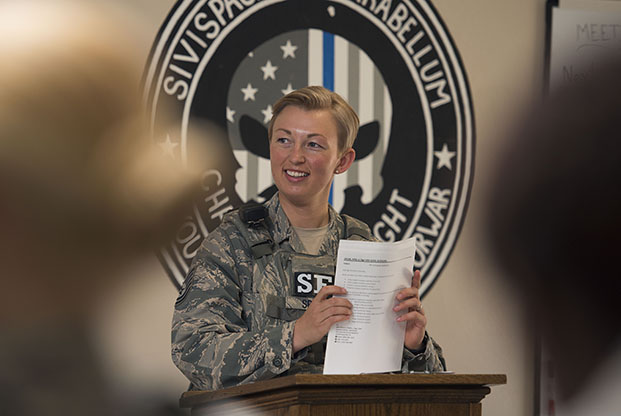The long-awaited OCP uniform is on its way to the Air Force — and here’s when you could get it
By: Stephen Losey, 14 May 2018, Air Force Times
The wait is over: OCPs are here.
For years, airmen have dreamed of it, demanded it, and envied those lucky enough to have it already.
And now, finally, the Operational Camouflage Pattern uniform on its way. For everybody.
The Air Force announced Monday that it is adopting the Army’s OCP as its official utility uniform. The uniform will roll out across the force over the next three years.
While some airmen already wear the OCP ― such as airmen in the Middle East and Air Force Global Strike Command security forces ― the Air Force will start rolling it out to others beginning Oct. 1.
By April 1, 2021, all airmen will be required to wear the OCP, and the current airman battle uniform, or ABU, will be no more.
“Our airmen have made it clear, with a resounding, ‘Hey, we want to get into this uniform as soon as we possibly can,’” Maj. Gen. Robert LaBrutta, the Air Force’s director of military force management policy, said in a May 9 interview at the Pentagon. “Downrange and in garrison, [airmen consistently reported] it’s a better utility uniform than the ABU.”
LaBrutta said Air Force Chief of Staff Gen. Dave Goldfein and Chief Master Sergeant of the Air Force Kaleth Wright made the decision and were backed by Air Force Secretary Heather Wilson.
“We looked at all utility uniforms currently in our inventory to find the best of breed,” Goldfein said in a release Monday. “We spoke to and listened to airmen on this, and the OCP was the clear choice. The uniform works in all climates ― from Minot to Manbij ― and across the spectrum of missions we perform. It’s suitable for our airmen working on a flight line in Northern Tier states and for those conducting patrols in the Middle East.”
The OCP was chosen for three reasons: Its improved fit and comfort will make it easier for airmen to do their jobs, it will help airmen fit in alongside soldiers in the field and improve joint integration, and airmen consistently said they wanted the switch.
Operational Camouflage Pattern
![]()
The Air Force plans to switch completely over to the Operational Camouflage Pattern uniform by April 1, 2021. (Air Force)
“The OCP is a uniform for form, fit and function,” LaBrutta said. “It is the best of breed utility uniform that we believe is in the inventory that we can get into. And, as a result of that, our airmen are going to benefit from enhanced readiness through the use of the OCP.”
Air Force officials determined early on ― after receiving overwhelmingly positive feedback from airmen already wearing it ― that the OCP was the way to go, LaBrutta said. The question was, largely, how quickly to roll it out.
Since 2012, the OCP has been airmen’s combat utility uniform. It was first approved for airmen deployed to Afghanistan, so they would blend in alongside soldiers while on patrol, and later expanded to other Middle East locations.
About 100,000 airmen have worn the OCP downrange since 2012, and about 20,000 airmen currently wear it both deployed to U.S. Air Forces Central Command, and in garrison when guarding Global Strike Command facilities. Air Force Special Operations Command airmen and aircrews in Air Mobility Command also wear the OCP.
Their feedback has helped the Air Force make decisions on adopting the OCP across the force, LaBrutta said.
Goldfein, Wright and Wilson have also heard a great deal of interest in the OCP from airmen while traveling to bases.
It will also simplify life for airmen, who won’t have to maintain two different sets of utility uniforms.
“It just makes sense that we would have one utility uniform, instead of two,” LaBrutta said.
The OCP has a six-color palette and smooth lines, allowing its camouflage to better blend in to various environments, Global Strike Command said in 2014, when it started switching its security forces to that uniform.
ABUs, on the other hand, have a four-color, pixelated camouflage pattern that does not blend in as well.
“If you get in a firefight in the field and you’re laying down fire, who are you going to see first? Obviously that guy” in ABUs, Chief Master Sgt. Scott Daigneault, then-senior enlisted manager for the force improvement program at Global Strike Command, said in a 2014 release announcing the change. “The difference is almost night and day. Your eyes skim right over the guy in OCP and zone in on the guy in ABUs.”
When AFCENT in 2012 adopted OCPs as its official uniform for airmen deployed to Afghanistan, the command said the uniforms were chosen because they are comfortable, flame resistant and blend in well with Afghanistan’s terrain.
![]() Airmen will wear their rank in the middle of their chest -- instead of on the sleeves or collars and the uniform will have Velcro pockets on the chest. (Air Force)
Airmen will wear their rank in the middle of their chest -- instead of on the sleeves or collars and the uniform will have Velcro pockets on the chest. (Air Force)
These uniforms are eagerly anticipated by airmen ― so much so that Wright stirred up a hornet’s nest online in March when he posted photos on social media of himself wearing the OCP.
One commenter wondered if his photos were a “savage tease or friendly foreshadowing?” Others online suggested the photos were ”Troll level 1000,“ or “rubbing it in.”
This prompted a mea culpa from Wright, who denied any hidden message or attempt at trolling. Wright explained he only sought to blend in during his visit to the 27th Special Operations Group at Cannon Air Force Base in New Mexico, which already wore the OCP.
“Wow! I never thought I’d have to start of a post with ‘my bad’ but ... my bad!” Wright wrote online soon afterward.
When you’ll get it
Here’s the timeline for the rollout of the OCP:
July 2018: The Air Force expects to release an Air Force guidance memorandum on how to properly wear the OCP uniform.
Oct. 1: ”Optional wear” of the OCP will begin. That means anyone who already has the uniform hanging in his or her closet ― such as from a previous deployment to Afghanistan ― will be able to wear it.
Also that month, OCPs will go on sale at AAFES stores at a handful of bases ― Aviano Air Base in Italy, Joint Base Charleston in South Carolina, MacDill Air Force Base in Florida, and Shaw Air Force Base in South Carolina.
The Air Force will gradually expand from there, as the Defense Logistics Agency ramps up its ability to produce more of the new uniforms.
April 1, 2019: More AAFES stores ― but not yet all ― will start to get the OCP.
Oct. 1, 2019: New airmen coming in through basic military training, officer training school, and the Reserve Officer Training Corps will get their OCPs beginning next October, when LaBrutta said the production capacity is expected to be able to meet that demand.
Military training instructors and military training leaders will also start wearing OCPs at that time, to demonstrate proper dress and appearance standards to trainees.
AAFES is expected to start selling OCPs online next October as well.
June 2020: All airmen must transition to coyote brown boots. The old sage green boots, which most airmen wear with their ABUs, or desert sand boots, worn by some who already have OCPs, will no longer be allowed.
April 1, 2021: The final deadline for all of the more than 500,000 total force airmen to be wearing OCPs, and stop wearing ABUs once and for all.
The new OCP will cost about $20 more than the ABU, LaBrutta said. It will take the Air Force until this October to increase airmen’s clothing bag allowance by that amount, which is another reason why the service is waiting until fall to start allowing airmen to wear it. The coyote brown boots will cost about the same as the old boots, he said.
The Air Force also wants airmen who already have OCPs to switch over at the same time, where possible, which is why optional wear isn’t beginning before October, he said.
“It’s a heavy lift,” LaBrutta said of DLA’s effort to provide OCPs for both the Army and the Air Force. “It’s going to take some time for us to be able to field this across the United States Air Force. Folks are going to have to be patient.”
Get ready for squadron patches
Enlisted airmen will no longer wear their rank insignia on their sleeves, and officer insignia won’t be on their collars anymore. Instead, officers and enlisted will both wear rank insignia in the middle of their chests.
Airmen will also have their last names on the back of their patrol caps.
The Air Force will use a spice brown color for lettering, patches and most insignia, LaBrutta said, as opposed to the black used by the Army on their OCPs.
First lieutenant and lieutenant colonel insignia will be black, to differentiate them from second lieutenant and major insignia. The uniform configurations will otherwise be the same as the Army’s version.
And as part of an effort to build esprit de corps and revitalize the squadron structure of the Air Force ― one of Goldfein’s top priorities ― airmen will wear heraldry patches on their new uniforms alongside the U.S. flag.
“Folks like to pay tribute to their organizations,” LaBrutta said. “And so the patches, from a squadron perspective, are going to be part of the uniform as well. They’ll have to meet the color requirements that we have, and we’ll get that out to them. But squadron patches, heraldry patches will be on the uniform.“
In a follow-up email, Air Force spokeswoman Maj. Kate Atanasoff said headquarters patches and the U.S. flag will be worn on the right shoulder, and unit patches and authorized duty identifiers ― such as security forces, combat controller or Tactical Air Control Party ― will be worn on the left shoulder. The guidance coming out this summer will provide more detail on proper wear of patches.
As organizations design their new patches, they will have to use spice brown, as well as other specific thread colors that will be authorized by the Air Force.
“Unit patches express squadron identity and heritage ― something our airmen are incredibly proud of and want to celebrate,” Goldfein said.
So-called morale shirts, which were color-coded by squadron, are going away, Air Force spokeswoman Brooke Brzozowske said.
Patches will be velcroed on, but LaBrutta said airmen will be able to choose whether they velcro or sew on their name tag and U.S. Air Force tag.
Pockets on the chest will be at the same slanted configuration as on the Army’s OCP, and will velcro shut. Pockets on the arms will have side zippers, Atanasoff said.
The Air Force’s current sage green boots will be no more, and the service will transition into the coyote brown boots. Airmen will no longer be able to wear desert sand boots, as some currently do with their OCPs.
Old boots will be disposed of, but there will not be a buy-back.
LaBrutta said airmen could wear a tan t-shirt under the OCP, which he said matches well with the coyote brown boots. Airmen will continue wearing the so-called “DLA green” socks, he said, which are similar in color to tan. The belt will also be tan.
“The chief and the chief master sergeant of the Air Force, they want to make sure that we’re looking as professional as we possibly can in this uniform, thus the color patterns and everything,” LaBrutta said.
Airmen will also be able to roll their sleeves in this uniform, Atanasoff said.
The Air Force will use the Army’s inventory of backpacks and other equipment, to make sure it matches the new uniforms.
When stacked up against the current ABU, the Army’s OCP fits better and is more comfortable, LaBrutta said. It will likely last about as long as the old ABU before it wears out, he said.
“Those that wear the uniform, day in and day out, say that it actually wears better,” LaBrutta said. “In the operations that we’re wearing the uniform in, whether it’s a defender at Air Force Global Strike Command, or a battlefield airman, they believe it’s a better uniform to actually do their duties in.”
Atanasoff said the old and new uniforms have the same fabric weight, and the same 50-50 nylon cotton blend. The OCP will have no permanent press treatment, as the ABU initially had, and the OCP will have an “insect shield” permethrin treatment.
The uniform will simply be called the OCP, not the Airman Combat Uniform, as it has previously been called.
The switch will come with a hefty up-front price tag ― about $237 million over the first three years, to dispose of all the old boots and uniforms that will no longer be needed.
LaBrutta said one reason the Air Force stretched the adoption over three years was to draw down the old inventory as much as possible.
Some old ABUs could be handed down to JROTC units, LaBrutta said.
But over time, as the Air Force no longer has to pay for tens of thousands of airmen to keep up two different sets of utility uniforms, LaBrutta expects the service will break even.
“There are up-front investment costs any time you transition into something like this,” LaBrutta said. “But in the long term, it will be a break-even for the United States Air Force. The benefit that we’re going to get out of this in readiness, joint integration, and the airman demand signal that’s out there, are the reasons why we’re doing this, and very worthwhile.”
Deployed airmen who will go outside the wire will still receive a fire-resistant version of the OCP, LaBrutta said.
Pilots and other rated airmen will continue to wear their usual flight suits when performing rated duties, he said, but will wear OCPs like everybody else at other times.
LaBrutta said the women’s version of the OCP will have 20 different sizes. Female airmen who have worn the OCP while deployed to AFCENT have said it fits them much better than the women’s version of the ABU, he said.
Women will also have the option of wearing the unisex version of the OCP.
“The feedback that we’ve received from the women that have worn it in Air Forces Central Command has been very positive,” LaBrutta said. “So that’s another reason for moving into this new equipment item.”
Stephen Losey covers Air Force leadership and personnel issues as the senior reporter for Air Force Times.
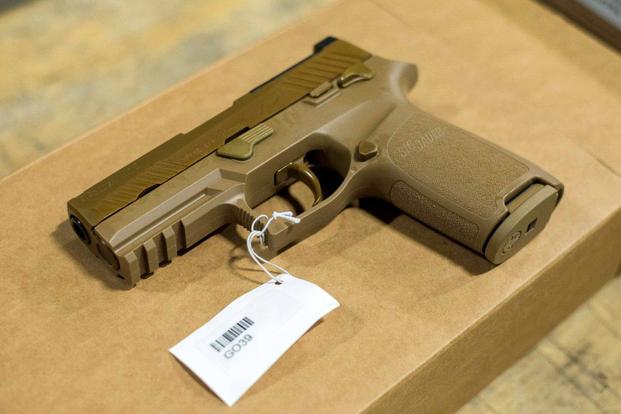
 FBI JOBS – WMD Management/Analyst
FBI JOBS – WMD Management/Analyst If I said the words “Peacekeeper Challenge” what would it mean to you? Hmmm…doesn’t ring a bell? If you vaguely recall hearing something about it “Peacekeeper Challenge” but remember being annoyed listening to the old senior NCOs and Colonels reliving their glory days and then saying “too bad you didn’t get a chance to do that” then maybe we’re on to something. If the term immediately made your heart rate increase and brought back a stream of memories of successfully navigating “dirty names” and the “stairway to heaven” and joining your team at the start of the first event having successfully overcome the RAF Regiment team’s efforts to “prep the battlefield,” then congratulations on making Chief – you’re officially old school. If I said the words “Defender Challenge” and you said “oh yeah, now I know what you’re talking about” then I think I’ve finally tapped into the full audience.
If I said the words “Peacekeeper Challenge” what would it mean to you? Hmmm…doesn’t ring a bell? If you vaguely recall hearing something about it “Peacekeeper Challenge” but remember being annoyed listening to the old senior NCOs and Colonels reliving their glory days and then saying “too bad you didn’t get a chance to do that” then maybe we’re on to something. If the term immediately made your heart rate increase and brought back a stream of memories of successfully navigating “dirty names” and the “stairway to heaven” and joining your team at the start of the first event having successfully overcome the RAF Regiment team’s efforts to “prep the battlefield,” then congratulations on making Chief – you’re officially old school. If I said the words “Defender Challenge” and you said “oh yeah, now I know what you’re talking about” then I think I’ve finally tapped into the full audience.